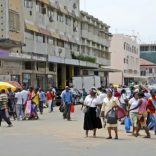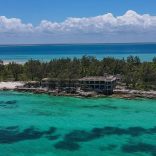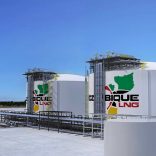Mozambique limits public service admissions until 2028 to curb spending
Debt crisis has resulted in a contraction in Mozambique’s real economy

The debt crisis is the main feature in any analysis of Mozambique, with the African Development Bank emphasising the enormous effects of the country’s financial default.
Exports of coal and agricultural production are to constitute the mainstay of a projected growth of 5.3 percent this year, but the debt crisis has resulted in a contraction of the real economy, says the African Development Bank (AfDB).
“The recovery of GDP growth to an estimated 4.7 percent in 2017 and a projected 5.3 percent in 2018 is due to increased coal exports and agricultural production; other sectors are likely to underperform,” the AfDB’s African Economic Outlook 2018 report released on Wednesday in Abidjan, Ivory Coast, says.
The AfDB stresses the enormous impact of the financial default that the country incurred in 2016.
“In the financial crisis following the 2016 disclosure of secret debts worth nearly 10 percent of GDP, the debt-to-GDP ratio reached an estimated 125 percent at the end of 2016, while the metical registered a 40 percent devaluation against the U.S. dollar and inflation suffered a 10-fold increase to 19.8 percent,” the AfDB analysts write.
“Public arrears to the private sector are estimated to exceed $500 million (4 percent of GDP). The private sector is further strangled by high credit rates (on average 35 percent for a one-year commercial loan) and depressed private consumption. The result is a contracting real economy, except for the primary sector and some services,” the report reads.
After years of expenditure expansion “that pushed debt to unsustainable levels, the government defaulted on its sovereign bond in January 2017. Faced with financing constraints, the government is implementing a fiscal consolidation effort,” the document reads, forecasting a decline in expenditure from 33.9 percent in 2017 to 30.5 percent this year.
“Mozambique has yet to recover from the economic downturn that started in 2015,” the AfDB notes. “The combination of declining prices for traditional export commodities, persistent El Niño drought effects, internal military confrontation and large decreases in foreign direct investment (FDI) nearly halved the past decade’s 7 percent GDP historical average growth to 3.8 percent in 2016. This drop was compounded by the 2016 governance crisis, which reduced external financing and donor support.”
In the African continent as a whole, the AfDB forecasts growth of 4.1 percent, noting that recovery has been faster in non-resource dependent countries and advocating debt development financing. “The recovery in growth has been faster than expected, particularly in non-resource dependent economies, underscoring Africa’s resilience,” the report reads.
“Actual production growth is estimated to have increased by 3.6 percent in 2017 from an increase of 2.2 percent in 2016 and accelerating to 4.1 percent in 2018 and 2019,” it adds. “Recovery in growth may mark a turning point in net commodity exporting countries, where the continued decline in export prices has led to declining export earnings and worsened macroeconomic imbalances.”












Leave a Reply
Be the First to Comment!
You must be logged in to post a comment.
You must be logged in to post a comment.